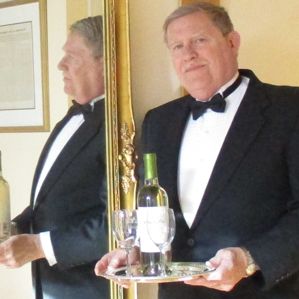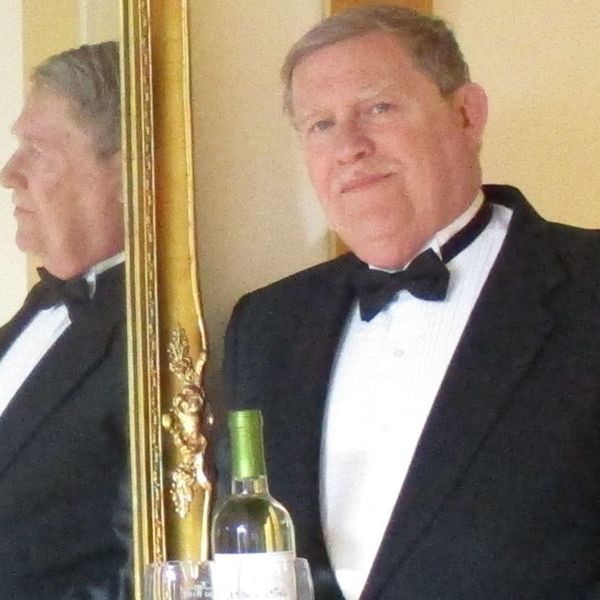The Voyage From St John's Newfoundland to Saint-Pierre





The day before we sailed from St John's Newfoundland, we took on a dozen or so extra "Newfies" as volunteer crew. Among the dozen "Newfie" volunteers was a girl named Carol, a girl who would later relocate from Canada to the US to be with me. This was a disaster in the making. After the trip was over, Carol and I dated for a while, moved in together, talked of marriage, and ended in a fiery split up. I can't help but wonder whether it is simply too difficult to date a girl from a different country. To this day I have wondered, what are the rules?
The next day, the Gazela set sail on the first ebb tide of the day. See PHOTO 1 of the Gazela as seen from the stern while tied up at the city dock. This time coincided with first light and meaning the captain gave the pre-dawn "all hands call" about an hour before sunrise and the Gazela came to life. The Gazela was a 700 ton barkentine (3 masts: foremast was square-rigged and the main and mizzen masts were gaff rigged). St John's had thrown us a party every day for the past week. The captain wanted to put on a good show as we left St John's. He wanted us to be depart under sail power and have all … sails set before we reached the Narrows to exit the harbor. In the pre-dawn hours, he gave out the assignments. I was assigned to the starboard side of the upper and lower top yards on the foremast.
In the pre-dawn hours, our big Diesel engine was started in order to warm up. Everybody except the climbing crews stood by their stations on the deck waiting for commands. I was in the climbing crew for the foremast. Since it was pre-dawn, I stood on the deck ready to climb but awaiting the command to climb to my work station. Just before sunrise, the climbing crew was order aloft to their work stations.
When the captain gave this order, I climbed the ratlines on the lower shrouds until I reached the overhanging futtocks shrouds just below the platform. Then leaning backward, I climbed up and over the futtocks shrouds, reaching over the platform to grab the topmast shrouds. I pulled myself up and scrambled onto the platform. I continued climbing above the platform on the ratlines of the upper shrouds. Half way up the upper shrouds, I stepped off the ratlines onto the foot rope (actually wire rope) that was slung under the lower top yard and held up by hanging stirrups. I shuffled along the foot rope as I moved outboard to my assigned workstation and clipped in.
The lower top sail had been neatly "flaked" and laid on top of the lower top yard (a horizontal spar). The flaked sail was tied to the yard with short lines called gaskets. On the foot rope with me were 5 other sailors in the climbing crew for the upper and lower top sails. Working in unison, we untied the gaskets and gently pushed the neatly flaked lower top sail forward so it would fall off the yard. The head of the sail was tied to the underside of the yard. The sail was not able to drop down completely because buntlines were tied to the bottom of, i.e. bunt of, the sail and clewlines were tied to the bottom corners (clews) of the sails. The buntlines and clewlines were led down to the deck so the deck crews could lower the sail like a theater curtain.
The foot rope had been installed so that the lower top yard was just a little lower than waist high when we stood on the foot rope and the upper top yard was still within arm's reach. After the lower top sail was let loose to "hang in its gear," the crew on the foot rope reached up to untie the gaskets holding the upper top sail onto the upper top yard. The clews of the upper top sail (at the bottom corners of that sail) were affixed to the lower top yard, but the upper top yard was movable. The deck crew then pulls on the upper top yard halyard to lift the upper top yard into place. Since the upper top sail is already tied to the underside of the upper top yard, the sail itself was pulled tight between the upper top yard and the lower top yard (to which the sail's clews are tied). Both the upper and lower top sails quickly filled with wind.
Similar operations were taking place on the big Course sail below me, and similar operations were taking place on the T'Gallant sail (Top Gallant sail) above me. We set every sail that could be set under the wind conditions before we left the harbor. The deck crew then set the sheets, lifts and braces to adjust the angles of the sails from lines that had been led to belaying pins on the deck. We shut down the Diesel engine and entered the harbor's Narrows under full sail so the locals could take all the pictures they wanted. A dozen or so smaller boats followed us to the Narrows. See PHOTO 2 showing St John's harbor in the foreground, the Atlantic Ocean in the background and the NARROWS to allow ships to pass between the harbor and the Atlantic Ocean.
Most of the climbing crew climbed down, but I remained standing on the foot rope of the lower top yard of the foremast, about 50 or 60 feet over the water. I watched as we sailed by the World War II vintage Fort Amherst on the cliffs of the south cape. See PHOTO 3 for a view of the remains of Fort Amherst on the south cape. We were passing through the Narrows. When I looked to the starboard side of the ship, I saw the south cape which rose up to about 100 to 200 feet over the water. There were gun emplacements on the south cape about 50 or 100 feet over the water. The gun emplacements left no doubt that this was a fortified harbor built to be defended in war.
A little more than an hour after we left the dock, we were in the Atlantic Ocean making a slow lazy turn to starboard as we headed south to Trepassey Bay. Our crew had been up for three hours or more without breakfast and without coffee. Cook started preparing the breakfast when we left the docks but breakfast was not served until we reached the Atlantic Ocean. Cook had been assigned Carol to service as a … helper). Carol's help served which sped up the breakfast service. She was kind enough to bring me a cup of coffee when I had just climbed down from the rigging.
We were on our way to the self governing territory of France known as Saint-Pierre and Miquelon. It was during our sail from St John's to Saint-Pierre and Miquelon that I met and became friends with Carol.
We headed south to Trepassey Bay, sometimes called the Bay of Dead Men or Bay of Souls because of all the ship wrecks in this weather exposed area. Today, the village of Trepassey on the banks of the bay is a small fishing community on the south east corner of the Avalon peninsula. This is a popular area for whale watching.
On the way to Trepassey Bay, we sailed through the Witless Bay Ecological Reserve, home of the largest nesting colonies of Atlantic Puffin in North America, perhaps the world. It turned out that the captains girlfriend was a marine biologist specializing in sea birds. She was in her element since she was able to talk to us about the habits of the Atlantic Puffins and other birds.
Since we were ahead of schedule and had taken on some large timber about 3 or 4 weeks earlier, we anchored in Trepassey Bay for a day. There, we turned our deck into a wood shop and built a new mizzen gaff from the timber so we could replace the current mizzen gaff that was failing due to a large crack in the wood. The ship's carpenter and about a dozen helpers were recruited to build the new gaff. The rest of the crew, numbering about 15 to 20, had miscellaneous ship's duties, but that did not keep everyone one busy. See PHOTO 4 for a snapshot of a portion of our crew on the foredeck of the Gazela. Carol and the cook kept hot meals and iced lemon water coming.
It was a very hot and sunny day. Although the galley was topside in a deck house, it still got plenty hot because of the Diesel fired stove that we lovingly called "![]() uff the Magic Dragon." As cook and Carol prepared hot meals, the galley got extra hot. Carol changed into a bikini since the galley was so hot.
uff the Magic Dragon." As cook and Carol prepared hot meals, the galley got extra hot. Carol changed into a bikini since the galley was so hot.
The male to female ratio of the crew was about three to one. Carol was young and attractive, at least I thought so and as much of the crew thought so. In her bikini, she seemed to be a distraction to much of the male crew who were bored and idol anyway. Carol felt that she was justified since her work station was inside the hot galley. I think some of our officers felt she was inappropriately dressed, but they never said anything. I think she did distract the male crew, including me.
It was while we were at anchor in Trepassey Bay with much of the crew idol that I met Tom Goodyear, a retired sea captain who had commanded men on ships for decades. Tom had retired from a job as a commercial sea captain, and he was among the Newfie volunteers we took aboard in St John's NL. He remarked to me how our volunteer crew functioned more efficiently than the crew of professional sailors that he commanded during his career. Maybe he was just flattering us. Even so, he was comparing our crew sailing a sail powered barkentine to crews sailing Diesel or gas turbine powered freighters and cargo ships. The comparison may not hold up.
Our next stop was an unscheduled stop in Burin (pop. about 2,400) on the western shore of the Burin Inlet on the east side of the Burin peninsula. Our captain's girlfriend suddenly took very ill so we anchored in Placentia Bay near Burin, carried her in a small boat to a waiting ambulance on shore. She spent a day and a night in the hospital, recovered and was returned to us. Having nothing to do but wait, we all got liberty that day and night.
I went to a couple of houses in Burin that had been turned into small museums. I learned of the history of this fishing community. In one of the museums, I ran into Carol, our … night, I went to the local beer hall and met up with Carol. Everything is within walking distance from the landing. The beer hall had a substantial bar, pool tables, dart boards, a juke box and … playground out front. It was there in the beer hall that I got to know Carol better and she got to know me. Yes, there was some drinking involved. We swapped stories until late at night and then we returned to the ship.
When the captain's girlfriend returned to the ship, we continued to our scheduled stop in Grand Bank (pop. about 2,600). On the way into Grand Bank, Captain Tom Goodyear jumped in to help as a lowly deck hand. He helped the crew take down and flake the mizzen sail. He jumped up on a deck house on one side of the mizzen while someone else was on the other side. The two of them alternated pushing the sail toward the other side as the gaff was slowly lower causing the sail to fold (flake) as the gaff came down. I grabbed my camera and took a picture of Tom helping to flake the mizzen sail, a picture that I later printed as an enlarged print, framed and gave to Tom and his wife. See PHOTO 5 showing a view of the aft part of the ship and a sailor inspecting the mizzen sail while standing on the same deck house on which Tom Goodyear stood.
We tied up at the town dock and stayed overnight, sleeping onboard the Gazela. We had a lot of fun during the visit. As we tied up at the dock, crowds began to gather on shore. They had not seen Gazela in more than 25 years. There was a lot of storytelling about the legendary soccer games that had been played between fishing fleets from different countries, and talk about how good the Portuguese players were. Gazela was a Portuguese ship. With me on the ship, two older men standing on the dock were telling me a story of how the Portuguese sailors had the best Port wine, and that the sailors would sell the wine to the locals. I asked, "If the wine was so good, why did they sell it?" The first older man said "they wanted local money so they could go see Betsy Mullens." The other older man elbowed the first one and said "![]() on't talk about that. She still lives in this town." Later that day, Carol wanted to go souvenir shopping in town and asked me to come along. Seeing this as a good sign, I said yes.
on't talk about that. She still lives in this town." Later that day, Carol wanted to go souvenir shopping in town and asked me to come along. Seeing this as a good sign, I said yes.
The next day, we sailed to Saint-Pierre and Miquelon, a self governing territory of France with a population of about 6,000. For about 3 days time, the local chamber of commerce, or equivalent, hosted many parties and tours all around the island. We found there were many restaurants to explore. Saint-Pierre is a highly impoverished colony and is trying to expand tourism to diversify their economy. Without tourism, they are dependent mostly on fishing. Carol and I went on the tours and ate at many of the restaurants.
On the night before Gazela was scheduled to depart, I had booked myself into a local hotel on the island, but Carol stayed the night on the Gazela. The next day, she left the Gazela before breakfast, came to my hotel room to temporarily store her sea bags and we went out together for breakfast. We talked until the early afternoon when she caught the ferry boat from Saint-Pierre to Grand Bank NL where she next boarded an intercity bus back to St John's NL.
After Carol left on the ferry, a fog bank rolled in and shrouded Saint Pierre in fog and drizzle. Gazela was scheduled to leave during this fog, and it did. I was down at the docks so I helped cast off the mooring lines. Then I waved goodbye as the Gazela slowly disappeared in the fog and drizzle amidst the clanging of the signal bell and the ship's fog horn blasting according to maritime regulations. I felt desolate as I walked back to my hotel. In the hotel lobby, the melancholy song, "La Vie en Rose" was playing. Still, I had to wait until the next day since my plane was not scheduled to leave until then.
Saint-Pierre had only two scheduled airline flights per week, both on a 12 passenger Piper Navaho. I had to wait a day and a night for my airline flight from Saint-Pierre to Halifax NS. From Halifax, I flew to Toronto, and from there to Baltimore. While waiting that night, I tried to telephone my father to let him know I was homeward bound. It didn't work. I had become accustom to speaking only French while visiting Saint-Pierre; however, the Saint-Pierre telephone system was routed through Paris. I tried to place a call through the Paris operator who was supposed to connect me to my father in Washington DC. This Paris operator spoke so fast that I could not understand her. My call to my father had to wait a couple of days until I had returned to Baltimore and drove home from there.
After returning to my prosaic existence, I telephoned Carol and we talked. We talked by phone on many occasions over the next several weeks. We negotiated until we agreed on a date: a 4 day dirty weekend in Toronto. I think she wanted to see Phantom of the Opera that was then playing in the theater district. But we played the tourist in the town, visiting Casa Loma, the CN Tower, etc. We had a lot of fun. After that, we dated a couple more times in Toronto, and then in Halifax NS, a couple of time in St John's NL (one time with 5 feet of snow on the ground), and in Washington DC. One time when I went to St John's, I brought with me the picture I snapped of Captain Tom Goodyear helping to flake the mizzen sail, but after I had it enlarged mounted in a frame. We called Tom and his wife and they asked us to tea. When I gave Tom the mounted picture, his wife began to tear up. Tom gave me a gift of a photo of the Argus, a Portuguese ship and companion to the Gazela.
Carol had worked for the provincial government of Newfoundland. In an economy move, the Canadian federal government took over many of the functions of the provinces, and Carol's job was made redundant. She got a generous severance package, but she still had no job at a time when the Newfoundland economy was in crisis due to the fishing ban. I recall that the unemployment rate was over 25%.
Carol and I had enjoyed a rather extravagant dating style, and we had begun talking about marriage. With Carol's job being eliminated, this seemed to be a good time to move in together. She moved into my home in Maryland, but it didn't work out. It was a disaster. Our living together lasted only a few months. After I moved her down, she wanted to go back to Canada, and I had to move her he back to Canada. We tried to do the long distance thing for a while, and we tried to do the friend thing for a while, but that didn't work either.
Anyway, that is my experience of trying to date someone from another country did not end happy. Perhaps we should not have moved in together when we are from different countries. What do you think? Is this typical of dating someone from another country, or did I just not handle the problems very well? Is it simply too difficult to date a girl from a different country. To this day I have wondered, what are the rules?
















